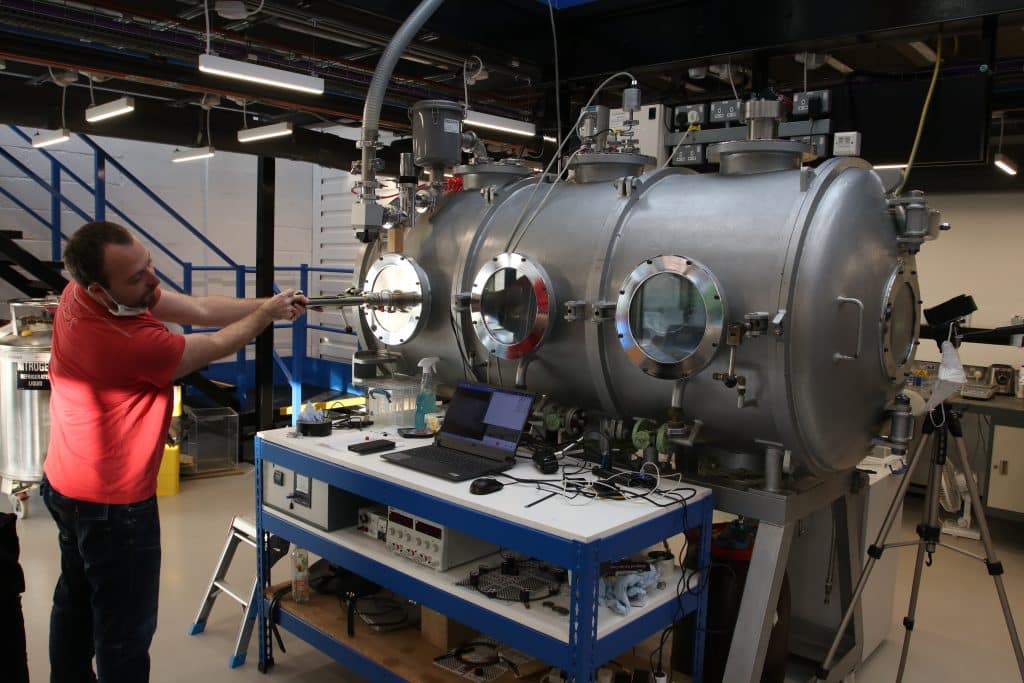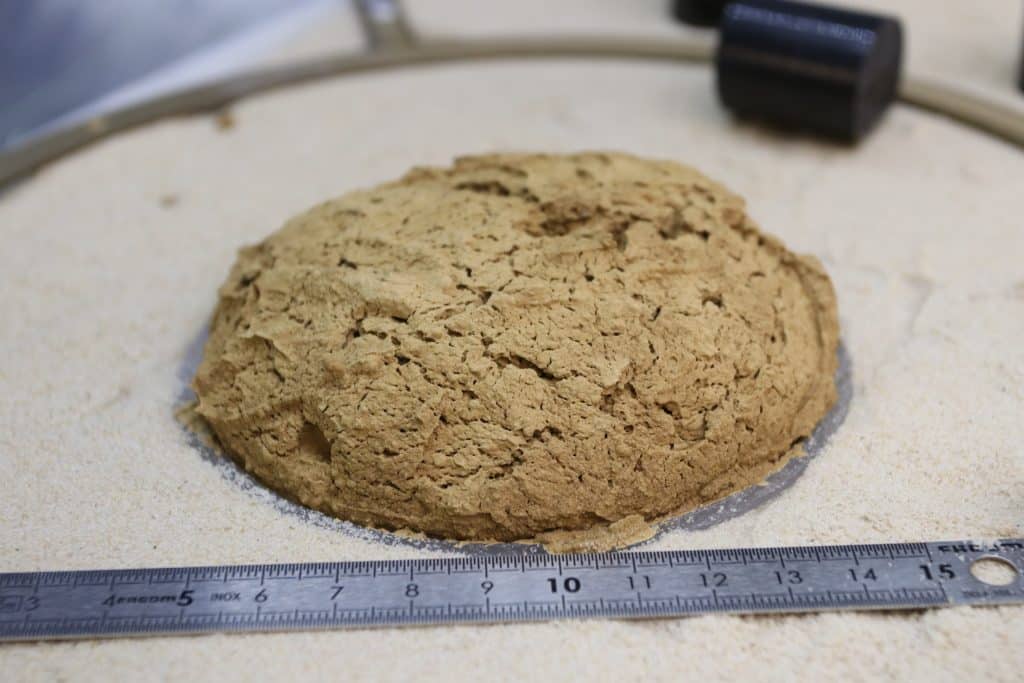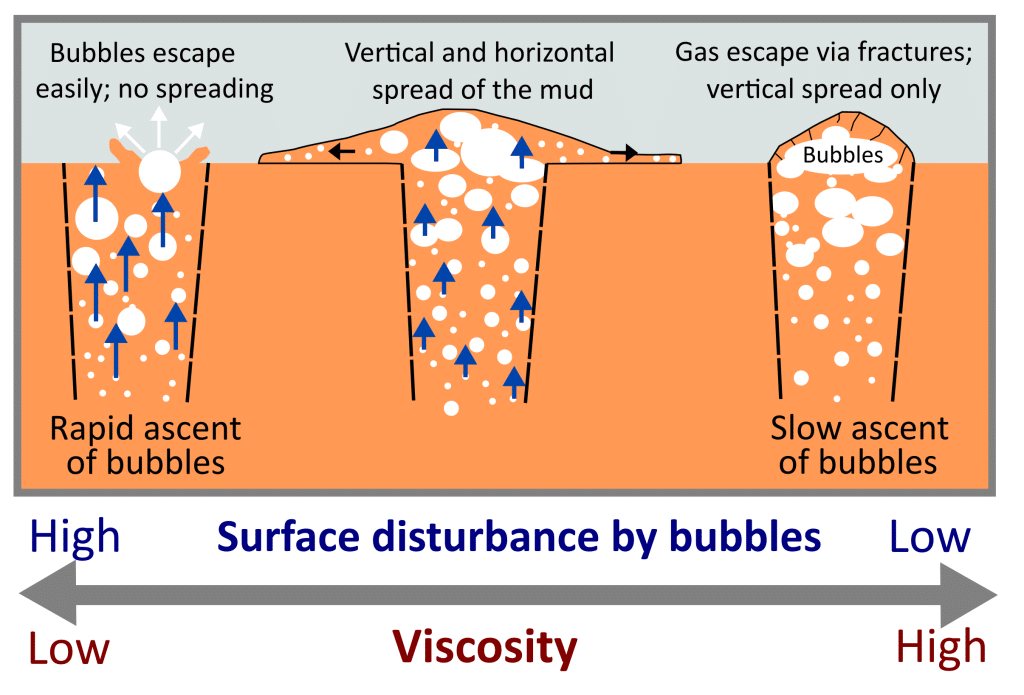Mud on Mars, it turns out, behaves very differently to mud on Earth. An international team of scientists led by Petr Brož from the Institute of Geophysics of the Czech Academy of Sciences has investigated the effect of the different environmental conditions when mud is emplaced on the surface of the Red Planet. The low atmospheric pressure (~6 mbar) causes water to become unstable, and mud evolves in a way that resembles sourdough bread during baking. Petr Brož and his collaborators performed experiments in the Mars Chamber at The Open University, UK, exposing mud samples to simulated martian surface conditions, the results of which have now been published in the Journal of Geophysical Research: Planets. These findings will help scientists re-interpret geomorphological features on Mars, and could shed light on understanding what is happening on other bodies in the Solar System.
On the surface of Mars, the average atmospheric pressure is about 160 times lower than on Earth, therefore, liquid water cannot be present for long periods of time. This is why it is difficult for surface water to flow on present-day Mars in the way familiar to us on Earth. This concept applies not only to water, but also to a mixture of water and small clay-sized grains – what we know as mud.
Previous research has shown that the formation of an ice crust on the surface of the mud prevents martian mud flows to move like water. Instead, they move like pahoehoe lava in Hawaii or Iceland. During this process, the mud flows under a protective layer of an icy crust which occasionally cracks. When this occurs, the mud is squeezed out through the cracks and begins to form a new flow lobe which forms its own ice shell, thus creating gradually overlapping lobes. “This process can only be only applied to water-rich muds, which flow very well. But we were interested in what happens when the amount of water in the mud decreases. That is, how will mixtures that are much harder to flow behave. What the mud volcanoes formed by the harder flowing muds would look like has remained shrouded in mystery, to date.” says Petr Brož, lead author of the study.
The research team therefore decided to use a low-pressure chamber at The Open University in Milton Keynes (UK), into which they placed mud samples of varying water content, which they then exposed to martian atmospheric conditions of 6 mbar. At these low pressure conditions water starts boiling and the produced the bubbles may escape very slowly or not at all from highly viscous muds. Viscous, slow-flowing muds exposed to martian pressure behave a bit like sourdough bread during baking. They gain volume due to the formation of a large number of bubbles.
“The experiments we conducted showed that while the low viscosity muds just bubbled up and the volume was still the same; the water-poor muds began to show a visible increase in volume. The reason for this change in volume was the instability of the water and its boiling. But in more viscous muds, which have the consistency of ketchup or toothpaste, the bubbles do not escape easily and therefore add to the volume of the mud.” explains Vojtěch Patočka from the Faculty of Mathematics and Physics at Charles University, co-author of the study.
This suggests that significant differences between the behaviour of mud on the surface of Earth and Mars should be expected. And as the consequence, mud volcanoes on Mars might look differently in some aspects from their terrestrial counterparts as some of the martian mud flows that form them might be much more “fluffy”.
“Since reduced atmospheric pressures in comparison to Earth are not only present on Mars, but also on other bodies in the Solar System, the experiments have also given us insight into how water or mud outflows might behave on other worlds. For example, Europa, Ceres, or Enceladus, where we assume that water sometimes reaches the surface during the process of cryovolcanism. Our work therefore helps to understand processes that could occur far beyond Mars, and that’s what’s valuable about it. When looking at the surface of Mars, and other worlds, we will now have a greater opportunity to identify the processes at work and identifying analogous processes we know from Earth. And this will allow us to better plan our further exploration of these distant worlds.” concludes the importance of Brož’s research.
Overview of the low-pressure Mars Chamber at The Open University, UK, where the mud experiments were conducted. Ondřej Krýza, one of the co-authors from the Institute of Geophysics of the CAS, operates the device. The chamber allows to reduce the atmospheric pressure to the average values present on the surface of Mars. PHOTO: Petr Brož
Muds that have little water in them and are therefore very dense, basically do not allow the escape of the resulting water vapour bubbles. This causes their volume to increase dramatically when exposed to reduced atmospheric pressure. The result can be something that looks like a cookie at first glance, but is actually a muddy blob made up of a frozen crust and a liquid interior full of large bubbles. PHOTO: Petr Brož
While water-rich muds allow the easy escape of water vapour bubbles created during boiling, denser muds slow down the movement of the bubbles significantly or even prevent it. The denser type of muds increase in volume and, depending on how well they can move, may continue to spill into the surrounding area or simply increase in thickness.
Link to the study:
https://doi.org/10.1029/2023JE007950
Brož, P., Krýza, O., Patočka, V., Pěnkavová, V., Conway, S. J., Mazzini, A., et al. (2023). Volumetric changes of mud on Mars: Evidence from laboratory simulations. Journal of Geophysical Research: Planets, 128, e2023JE007950.
Link to the video:
https://www.youtube.com/watch?v=whrbMCXvCGY
More information:
Mgr. Petr Brož, Ph.D. – principle investigator of the study
petr.broz@ig.cas.cz
+420 721 736 424




